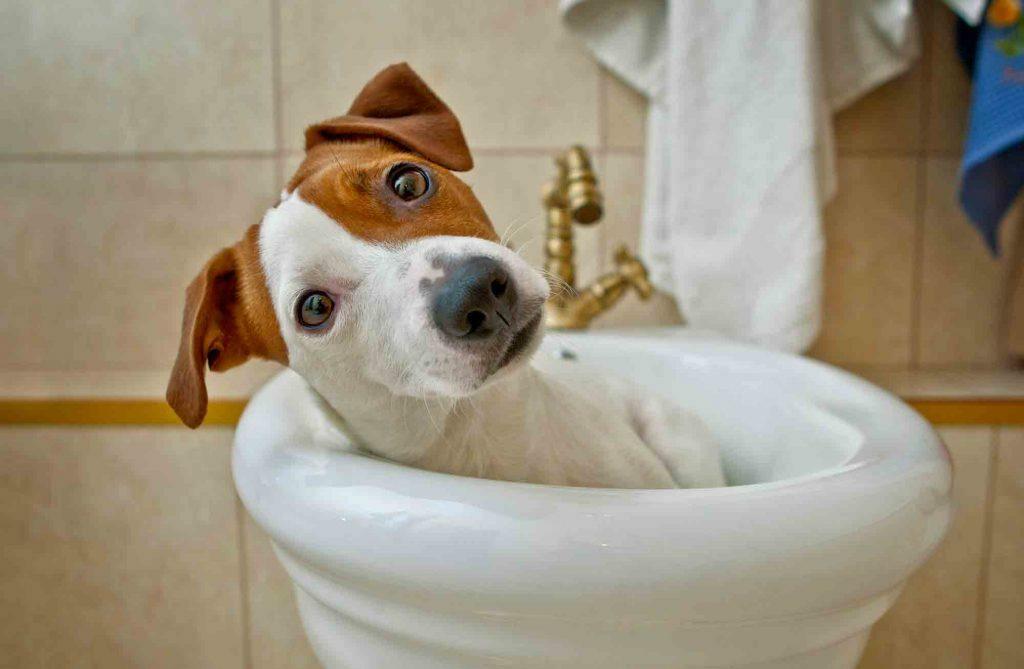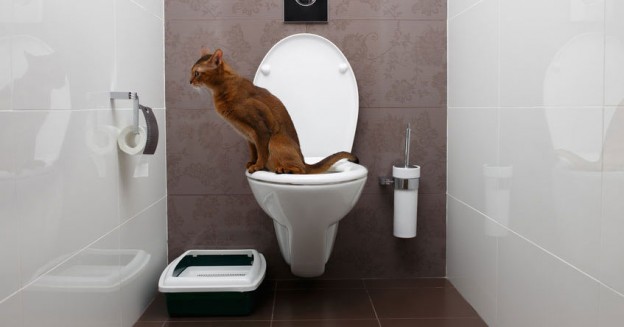This great article down the page pertaining to Don't Flush Your Pets Poo Down The Loo, Vet Warns is especially entertaining. Read it for your own benefit and see what you think of it.

When it concerns dealing with waste, especially animal waste, many individuals usually turn to the convenient alternative of flushing it down the toilet. Nonetheless, this seemingly simple solution can have major consequences for the atmosphere and public health. In this write-up, we'll explore why flushing animal waste down the toilet is a bad idea and supply alternate approaches for correct disposal.
Introduction
Correct waste disposal is crucial for keeping ecological sustainability and public health. While it may seem harmless to purge animal waste down the bathroom, it can lead to various problems, both for the atmosphere and human well-being.
Threats of flushing animal waste
Environmental effect
Purging animal waste presents dangerous germs and pathogens into rivers, which can adversely affect water ecological communities. These virus can infect water resources and injury aquatic life, disrupting delicate environments.
Public health issues
Pet waste has unsafe microorganisms such as E. coli and Salmonella, which can present significant health and wellness threats to people. Flushing animal waste down the toilet can contaminate water materials, causing the spread of illness and infections.
Alternatives to flushing
As opposed to flushing pet waste down the commode, there are a number of alternate disposal approaches that are more eco-friendly and hygienic.
Composting
Composting pet waste is an eco-friendly method to take care of it. By composting, raw material is broken down right into nutrient-rich dirt, which can be utilized to feed yards and plants.
Landfill disposal
Taking care of animal waste in a landfill is another option. While not as eco-friendly as composting, it is a much safer alternative to flushing, as it avoids the contamination of water sources.
Family pet waste disposal systems
There are specialized pet garbage disposal systems offered that safely and hygienically dispose of pet waste. These systems often make use of enzymes to break down waste and remove odors.
Actions to appropriate pet waste disposal
To ensure appropriate disposal of pet waste, follow these steps:
Scooping and bagging waste
Frequently scoop and bag pet waste using eco-friendly bags. This avoids waste from infecting the environment.
Using assigned waste bins
Dispose of bagged animal waste in designated waste bins, such as garden compost containers or land fill containers. Prevent flushing it down the bathroom in all prices.
Cleaning up can and pet locations consistently
Routinely tidy litter boxes and pet dog areas to prevent the buildup of waste and microorganisms. Use pet-safe cleansing products to maintain health.
Benefits of proper disposal approaches
Embracing proper disposal approaches for pet waste supplies several advantages:
Decreased environmental pollution
Proper disposal approaches lower the risk of environmental pollution, safeguarding rivers and communities from contamination
Decreased risk of water contamination.
By preventing flushing animal waste down the bathroom, the threat of water contamination is considerably reduced, protecting public health.
Improved cleanliness and health
Correct disposal approaches promote far better sanitation and health, creating a safer setting for both humans and pets.
Final thought
In conclusion, flushing pet waste down the toilet is damaging to the environment and public health. By embracing different disposal approaches and complying with correct waste management practices, we can decrease the adverse impact of animal waste and contribute to a cleaner, healthier planet.
Why You Should Never Flush Cat Poop Down the Toilet
A rose by any other name might smell as sweet, but not all poop is created equal. Toilets, and our sewage systems, are designed for human excrement, not animal waste. It might seem like it couldn’t hurt to toss cat feces into the loo, but it’s not a good idea to flush cat poop in the toilet.
First and foremost, assuming your cat uses a litter box, any waste is going to have litter on it. And even the smallest amount of litter can wreak havoc on plumbing.
Over time, small amounts build up, filling up your septic system. Most litter sold today is clumping; it is made from a type of clay that hardens when it gets wet. Ever tried to scrape old clumps from the bottom of a litter box? You know just how cement-hard it can get!
Now imagine just a small clump of that stuck in your pipes. A simple de-clogger like Drano isn’t going to cut it. And that means it’s going to cost you big time to fix it.
For an amusing, graphic tale of what happens when you flush too much litter down the toilet all at once, take a few minutes to read Gene Weingarten’s 2017 Washington Post column “So that’s what happens when you flush cat litter down the toilet.”
Parasitic Contamination
Believe it or not, your healthy kitty may be harboring a nasty parasite. Only cats excrete Toxoplasma in their feces. Yet it rarely causes serious health issues in the cats that are infected. Most people will be fine too if infected. Only pregnant women and people with compromised immune systems are at risk. (If you’ve ever heard how women who are expecting are excused from litter cleaning duty, Toxoplasma is why.)
But other animals may have a problem if infected with the parasite. And human water treatment systems aren’t designed to handle it. As a result, the systems don’t remove the parasite before discharging wastewater into local waterways. Fish, shellfish, and other marine life — otters in particular — are susceptible to toxoplasma. If exposed, most will end up with brain damage and many will die.
Depending on the species of fish, they may end up on someone’s fish hook and, ultimately on someone’s dinner plate. If that someone has a chronic illness, they’re at risk.
Skip the Toilet Training
We know there are folks out there who like to toilet train their cats. And we give them props, it takes a lot of work. But thanks to the toxoplasma, it’s not a good idea.
Leave the toilet to the humans, and accept your future litter cleaning duty.

Routinely tidy litter boxes and pet dog areas to prevent the buildup of waste and microorganisms. Use pet-safe cleansing products to maintain health.
Benefits of proper disposal approaches
Embracing proper disposal approaches for pet waste supplies several advantages:
Decreased environmental pollution
Proper disposal approaches lower the risk of environmental pollution, safeguarding rivers and communities from contamination
Decreased risk of water contamination.
By preventing flushing animal waste down the bathroom, the threat of water contamination is considerably reduced, protecting public health.
Improved cleanliness and health
Correct disposal approaches promote far better sanitation and health, creating a safer setting for both humans and pets.
Final thought
In conclusion, flushing pet waste down the toilet is damaging to the environment and public health. By embracing different disposal approaches and complying with correct waste management practices, we can decrease the adverse impact of animal waste and contribute to a cleaner, healthier planet.
Why You Should Never Flush Cat Poop Down the Toilet
A rose by any other name might smell as sweet, but not all poop is created equal. Toilets, and our sewage systems, are designed for human excrement, not animal waste. It might seem like it couldn’t hurt to toss cat feces into the loo, but it’s not a good idea to flush cat poop in the toilet.
First and foremost, assuming your cat uses a litter box, any waste is going to have litter on it. And even the smallest amount of litter can wreak havoc on plumbing.
Over time, small amounts build up, filling up your septic system. Most litter sold today is clumping; it is made from a type of clay that hardens when it gets wet. Ever tried to scrape old clumps from the bottom of a litter box? You know just how cement-hard it can get!
Now imagine just a small clump of that stuck in your pipes. A simple de-clogger like Drano isn’t going to cut it. And that means it’s going to cost you big time to fix it.
For an amusing, graphic tale of what happens when you flush too much litter down the toilet all at once, take a few minutes to read Gene Weingarten’s 2017 Washington Post column “So that’s what happens when you flush cat litter down the toilet.”
Parasitic Contamination
Believe it or not, your healthy kitty may be harboring a nasty parasite. Only cats excrete Toxoplasma in their feces. Yet it rarely causes serious health issues in the cats that are infected. Most people will be fine too if infected. Only pregnant women and people with compromised immune systems are at risk. (If you’ve ever heard how women who are expecting are excused from litter cleaning duty, Toxoplasma is why.)
But other animals may have a problem if infected with the parasite. And human water treatment systems aren’t designed to handle it. As a result, the systems don’t remove the parasite before discharging wastewater into local waterways. Fish, shellfish, and other marine life — otters in particular — are susceptible to toxoplasma. If exposed, most will end up with brain damage and many will die.
Depending on the species of fish, they may end up on someone’s fish hook and, ultimately on someone’s dinner plate. If that someone has a chronic illness, they’re at risk.
Skip the Toilet Training
We know there are folks out there who like to toilet train their cats. And we give them props, it takes a lot of work. But thanks to the toxoplasma, it’s not a good idea.
Leave the toilet to the humans, and accept your future litter cleaning duty.

I came across that entry about when doing a search on the search engines. Do you know anybody else who is excited about the niche? Take a moment to share it. Thank you so much for taking the time to read it.
Call Today